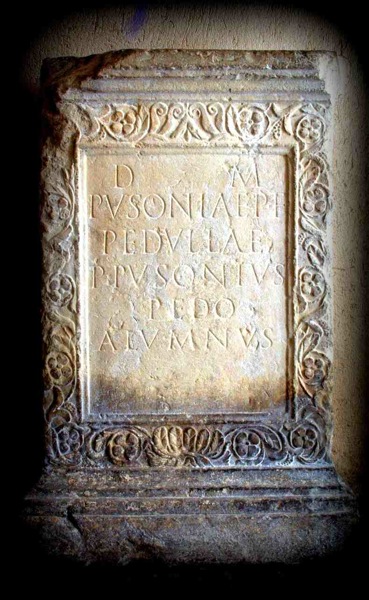I left Montpellier Mars 30. and came to lodge at M. F. at Nismes. Apr. 1.
Dijs Manibus
Corneliae Grat[ae]
T. Connius Silanus
Uxori[1]
D. M.
Cattij Achillei
Julia Severina
Marito Optimo[2]
[1] This is an epitaph for a small Roman tombstone with a base and crown that Lister must have seen at Nîmes. The Inscription reads ‘Diis Manibus Corneliae Cratae T[itus] Connius Silanus Uxori’. According to Eugène Germer-Durand, the tomb was originally near the basion of the Porte de la Couronne, before being moved to the Jardine Séguier near the Porte d’Auguste and finally was placed in the Musée d’Archéologie in Nimes. See Germer-Durand, Inscriptions antiques de Nìmes (E. Privat, 1893), 662. The inscription was noted by Jean Poldo d’Albenas, Discours historial de l’antique et illustre cité de Nismes, en la Gaule (Lyon: Guillaume Roville, 1559), 173; it was also illustrated by Janus Gruter, described as being in Nîmes in his Inscriptiones antiquae totius orbis roman (Amsterdam: Franciscus Halma, 1707), vol. 2, 776, image one.
[2] This is an epitaph for a small Roman tombstone with a base and crown that Lister must have seen at Nîmes. The epitaph reads ‘Diis Manibus C. Attii Achillei; Iulia Severina marito optimo’. According to Germer-Durand, the tomb was originally near the basion of the Porte de la Couronne, before being moved to the Jardine Séguier near the Porte d’ Auguste and finally was placed in the Musée d’Archéologie in Nimes. See Germer-Durand, Inscriptions antiques de Nìmes, 590. The first notice of its epigraphy was in Jean Poldo d’Albenas, Discours historial de l’antique et illustre cité de Nismes, en la Gaule, 173.

